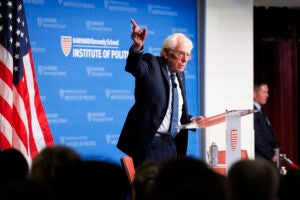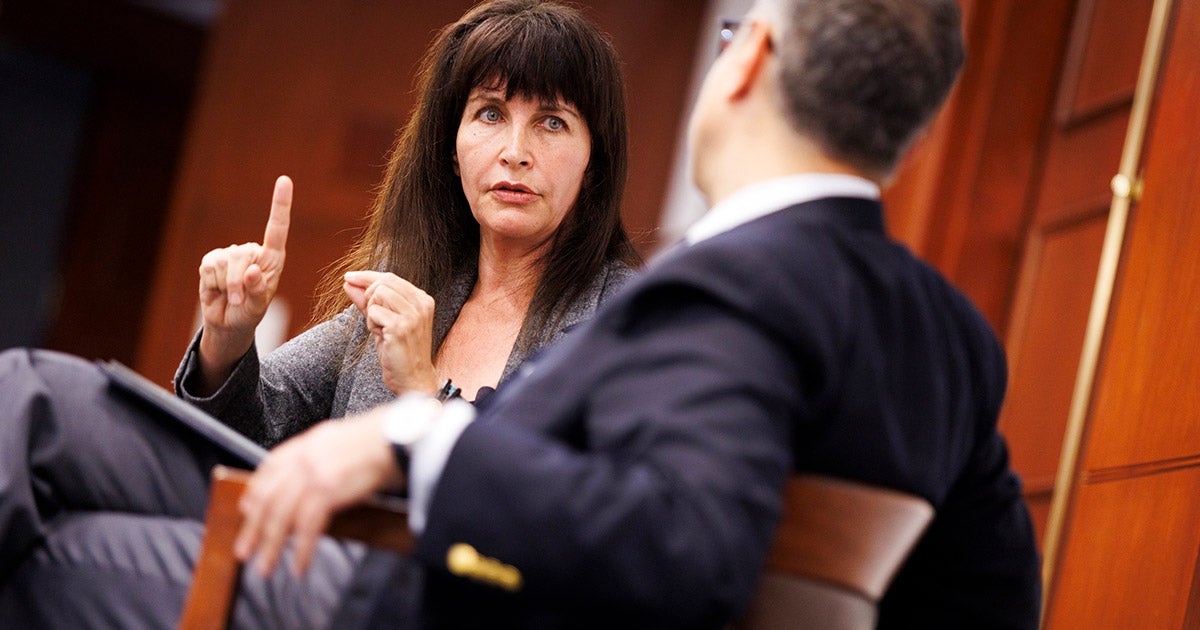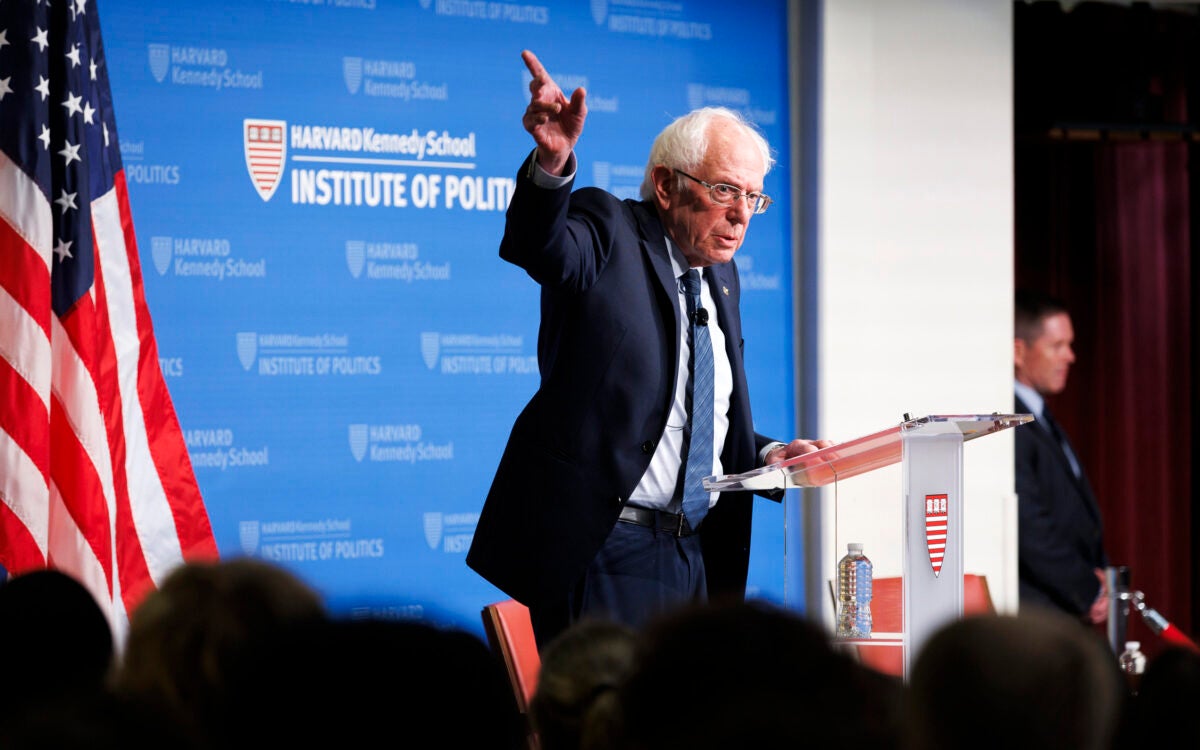Targeting teacher tenure
HGSE’s Kane says legal challenges in K-12 systems focus on student outcomes, measuring teaching
A group of parents filed a lawsuit in late July challenging the tenure policies governing public school teachers in New York state. The parents have the backing of — and some observers say are a proxy for — the Partnership for Educational Justice, an advocacy group founded and promoted by former television journalist Campbell Brown.
Earlier this month, Brown’s organization garnered national attention after announcing that David Boies, the high-profile litigator who helped overturn California’s same-sex marriage ban and represented former Vice President Al Gore in Bush v. Gore, had signed on as its chairman of the board.
The lawsuit is the first of what many analysts expect will be numerous legal challenges around the country following a landmark decision in June by a California Superior Court judge who struck down the tenure system there as unconstitutional under state law, saying it unfairly saddled students in high-needs schools with low-performing teachers. Proponents of tenure reform say that job protections such as seniority, tenure, and dismissal processes too often shield ineffective teachers at the expense of students in disadvantaged schools who don’t receive a first-class education. But critics say the lawsuits are smokescreens that conceal a politically motivated effort to bust teachers’ unions and expand the growing privatization of public education.
Thomas Kane is the Walter H. Gale Professor of Education and a professor of economics at the Harvard Graduate School of Education (HGSE), and faculty director of the Center for Education Policy Research at Harvard University. Kane directed the Measures of Effective Teaching project for the Bill & Melinda Gates Foundation, which studied issues facing K-12 and higher education, such as the design of school accountability systems, and teacher recruitment and retention. He was an expert witness for the plaintiffs in Vergara v. California.
Kane spoke with the Gazette about the tenure debate and where it’s likely headed.
GAZETTE: What do you think of the arguments from both sides?
KANE: The substantive question is whether the due-process requirements set out in tenure laws are necessary to protect teachers against arbitrary management decisions. Each side has been questioning the motives of the other. But the real question is: Are these due-process requirements necessary to protect the teachers from arbitrary managerial decisions? Is there another way to ensure that hiring and firing decisions are made on the basis of quality of teaching, and not personal relationships or favoritism? If the job protections are excessive, then we shouldn’t care who’s funding the lawsuits.
There were three different issues that the plaintiffs were challenging in California. First, under state law, tenure decisions had to be made within 18 months. The plaintiffs argued that by rushing the decision, we’re making a lot more mistakes than are necessary. Moreover, the plaintiffs challenged the due-process requirements for teachers who have been given tenure. Those are higher and more onerous and more costly than for every other public employee in California. The Vergara decision would not eliminate due-process requirements; it would just extend to teachers the same due-process rights that every other public employee in California has. Third, the plaintiffs challenged the state law requiring schools to do any layoffs based on seniority alone, not teaching quality. Prior to the lawsuit, any superstar second- or third-year teacher had to be laid off prior to the least-effective, more senior teacher. The question is, “Do such laws benefit kids, or are they purely for the sake of adults?”
For the last four decades, research has been telling us that individual teachers have huge effects on student outcomes. It’s not so much what school your child goes to, but which teacher in that school he or she is assigned to that matters. It matters not just for test scores, but as Raj Chetty [of Harvard’s Faculty of Arts and Sciences], John Friedman [of the Harvard Kennedy School], and Jonah Rockoff [of Columbia Business School] recently showed, for their earnings later. Moreover, we’ve learned that it’s hard to predict who the effective teachers are going to be based on the information observed during recruitment. A teacher’s later effectiveness is only weakly related to what college they went to, or what grades they got, or whether or not they have a teaching credential. So teachers matter, but it’s hard to predict who the great teachers are going to be until they are on the job. That’s the core challenge.
The unions ask: What’s wrong with making decisions about who the effective teachers are in the first 18 months? The problem is that managers have only seen one year of student achievement gains. They’ve seen one year’s worth of classroom observations. They could make a much better decision about which teachers to retain for tenure if they had an extra few years of data. In higher education, we wait seven to nine years typically.
GAZETTE: What about the critics’ claims, like union busting. Is that valid?
KANE: That may be effective in rallying their base. But it’s a smokescreen, a distraction. Why not just defend the policy? Is it in children’s interest to make teacher-tenure decisions in 18 months? Is it in children’s interests to create extraordinary due-process hurdles after 18 months? Is it in children’s interests to make layoff decisions base solely on seniority? I think they struggle to make that case.
GAZETTE: The advocacy group behind the New York lawsuit says that the “least effective” teachers are disproportionately working in disadvantaged schools. Is this accurate, and why is that?
KANE: That varies from district to district and state to state. Moreover, it’s a hard question to answer. When you’re using any measure — student achievement or a classroom observation — to infer whether or not a given teacher is effective, you obviously want to control for students’ prior achievement. But do you also control for students’ income and race? Some people would say, “Yes, you have to control for such factors because they are indirect measures of the kinds of academic stimulation and support students are receiving outside of school. On the other hand, if you do control for student income or race, you could be attributing to students’ background any systematic differences in the quality of teachers assigned to such students.
The only way to sort it out is if you have a given teacher who has taught lots of different types of students — high-income, low-income, African-American, white, Latino — where you can disentangle the effect of a specific teacher from the effect of students’ backgrounds. It is plausible that low-income and minority students are assigned the least effective teachers. I’ve seen evidence that is true in Los Angeles, for instance, but it’s not necessarily true everywhere. One would have to provide evidence that was the case.
GAZETTE: The group attributes low test scores to ineffective teachers. How much of a correlation is there, if any, between the two, and what metrics are most reliable to determine who’s at fault for poor student achievement?
KANE: Teachers definitely have an effect on student achievement. That’s true for low-income kids, and that’s true for high-income kids. At the same time, most of the difference in achievement between low-income and high-income students is not due to differences in teacher quality. Even in places where low-income and minority students are disproportionately assigned less-effective teachers, such differences explain only a small share of the total difference in performance between high-income and low-income students.
That said, if we actively assigned our best teachers to our lowest-income and disadvantaged students, we could use teacher quality as a tool to substantially close the achievement gap. Just the fact that teacher quality is not the sole driver of the problem doesn’t mean it couldn’t be an important part of closing the gap. Nevertheless, it’s probably politically impractical to expect middle- and higher-incomes parents to sign up to that. We need policies for raising the average effectiveness of teachers.
GAZETTE: Is the timely termination of underperforming teachers routinely difficult for administrators? And if so, is this a national problem or something largely confined to states where unions are especially powerful or tenure systems are poorly designed?
KANE: This is not solely an issue in unionized states. In most school districts, administrators have leeway during the probationary period to lay teachers off based on effectiveness. The period varies in length. In California, it was just 18 months, but in other places it’s three or four or even five years. I think the reasonable resolution here is to leave enough time during the probationary period to identify who the effective teachers are. Moreover, school districts need to use that time productively, to assemble data on student achievement, classroom observations, and, ideally, student evaluations. They should ensure that tenure is a real hurdle. Post-tenure, I think it is reasonable for teachers to expect reasonable due-process rights. But in many places, we’ve gone beyond reasonable due process.
The key issue is the availability of valid measures of teaching effectiveness. When those are available, it’s much easier to ensure that teachers are treated fairly. It’s when such measures are not available that we need extreme due-process requirements to be sure that decisions are not being made based on personal vendettas and favoritism. The only way out of the quandary is to ensure that there are ways to assess teachers’ effectiveness.
To defend its laws in Vergara, the state of California had to contradict itself. First, it needed to argue that school districts had perfect information during the probationary period, so that whenever any ineffective teacher got tenure, it was the fault of school district leadership, not the law. Then, to defend the last-in, first-out laws, they had to make an about-face and argue that districts knew nothing about effectiveness after tenure, that using seniority was the only way to ensure that favoritism was not the basis of retention decisions.
The obvious truth is that it is possible to assemble evidence on teachers’ effectiveness, but that such data will be imperfect, both before and after tenure. The right resolution is to improve the quality of our teacher-evaluation and feedback systems. That would allow schools to ensure high standards at tenure time and to protect teachers from favoritism with transparency, rather than lengthy due-process requirements, which end up protecting a lot of ineffective teachers.
GAZETTE: Are there policy changes that should take place in the way teachers are typically evaluated and retained, especially in high-needs schools?
KANE: Many school districts are being much more careful about which teachers actually get tenure, to make sure that tenure is an affirmative decision and not just a default decision. That’s the common ground. Teachers’ unions ought to be supporting efforts to raise the standards for tenure because it makes the job protections following tenure more legitimate. If the tenure decision were made on the basis of effectiveness, then there’ll be fewer cases of the very ineffective teachers who are afforded unreasonable due-process rights.
We must also recognize that some ineffective teachers will earn tenure, that somebody who’s effective early in their career sometimes fall off track. There should be reasonable due-process requirements for schools to make layoff decisions even after tenure. That will be more difficult for unions to support, but I believe that’s going to be the result from all these cases. Districts will do a better job collecting evidence during the probationary period, and making better tenure decisions. Moreover, districts will do a better job evaluating and providing feedback to teachers after tenure, so employment decisions can be made on the basis of the quality of instruction. And the extraordinary measures we took in the past to guard against favoritism will be less necessary.
GAZETTE: What are the costs and benefits of giving administrators or local school boards greater or even total autonomy to hire and fire teachers?
KANE: As the political favoritism in hiring probation officers in Massachusetts recently showed us, due-process requirements are appropriate in public hiring. But there are unreasonable forms of due process. When it costs a district $500,000, as Los Angeles demonstrated during the trial, to deal with each tenured teacher who was ineffective, we’ve gone too far. I totally agree that there should be safeguards to ensure teachers are not subject to arbitrary dismissals, but we can have a reasonable discussion about how high those safeguards need to be. That’s what the argument should be right now.
GAZETTE: How do you see this debate playing out?
KANE: Here’s what I hope happens: In states around the country, teachers’ unions will recognize that they have an interest in making sure the tenure review process is rigorous and subject to high standards. I also think that teachers will keep reasonable due-process rights, where principals are not able to simply hire their friends. School leaders will be able to make retention decisions based on valid measures such as student-achievement growth and classroom observations and student evaluations. Due-process requirements will be streamlined but not eliminated.
Some have wondered why there’s not been a groundswell of support from the majority of teachers who, after all, bear the burden of ineffective colleagues. They say, “Only the least effective 10 percent of teachers have anything to fear from eliminating last-in, first-out rules and reducing due-process.”
Those who ask overlook the fact that in the absence of meaningful teacher evaluations in the past, most teachers don’t know how they will fare under the new systems. Until the new evaluations are in place, a majority of teachers will fear that they could be put in the bottom 10 percent! In other words, such uncertainty tends to favor the status quo. It will be a rocky few years.
This interview has been edited for clarity and length.




